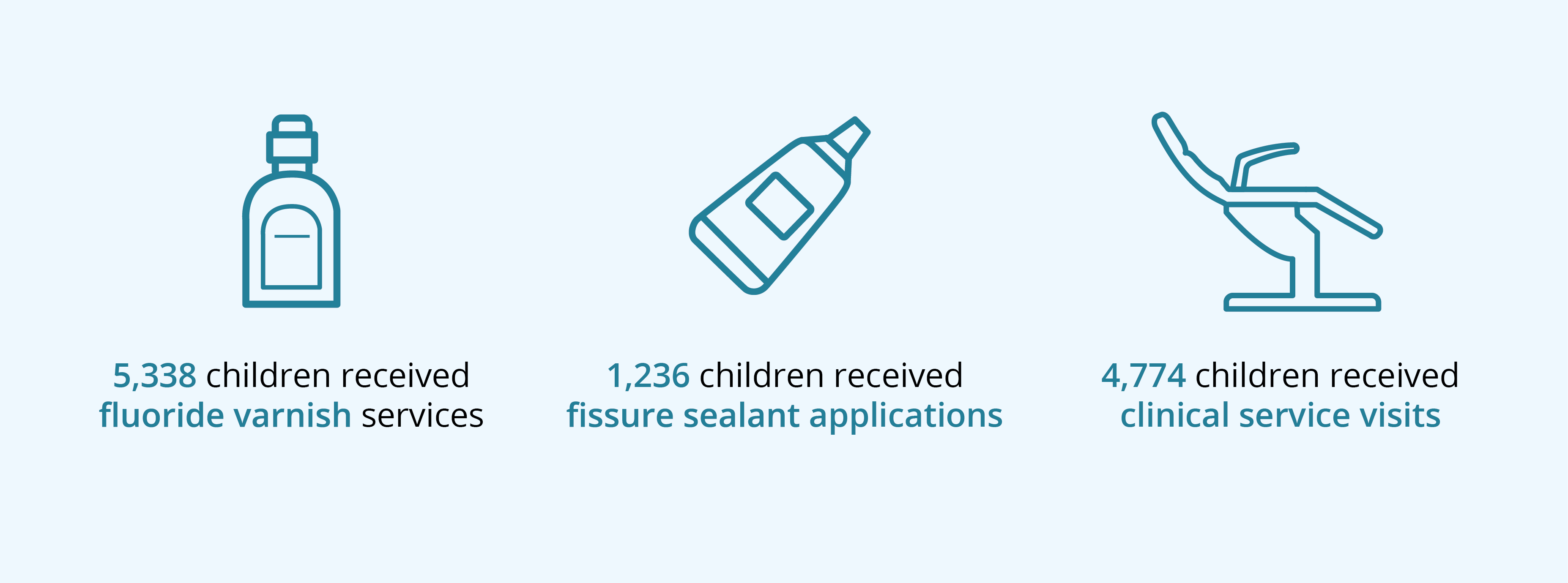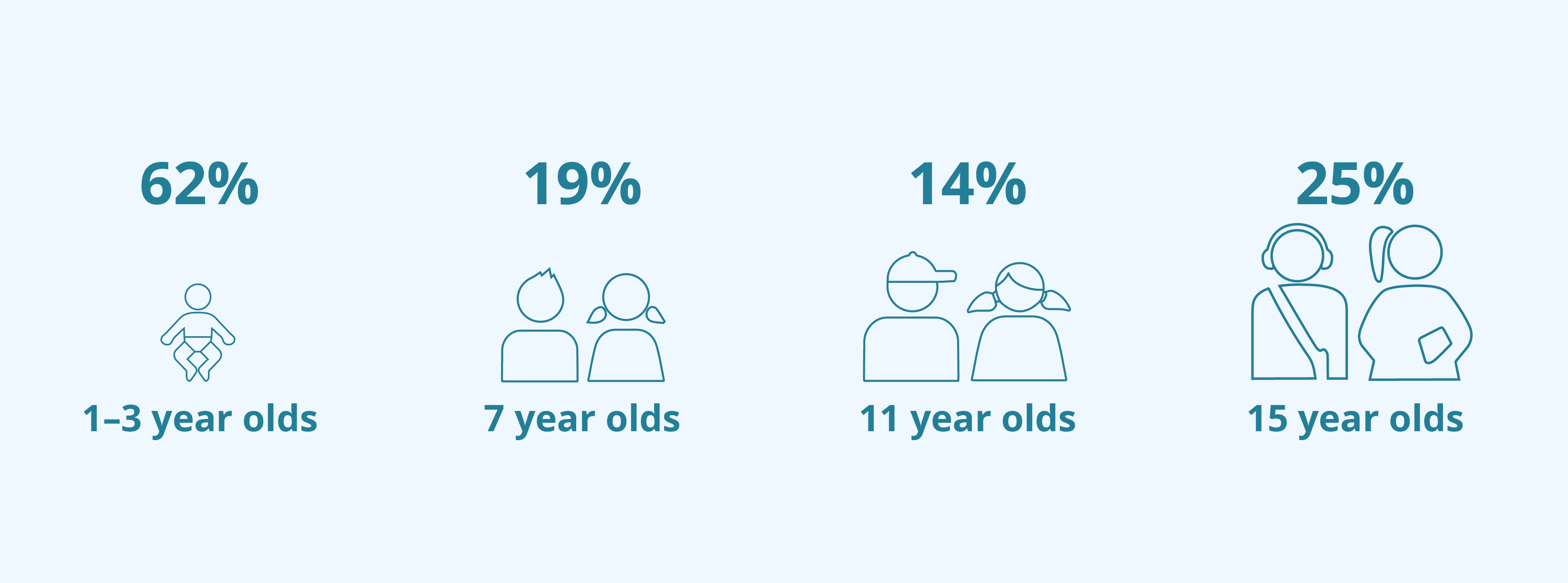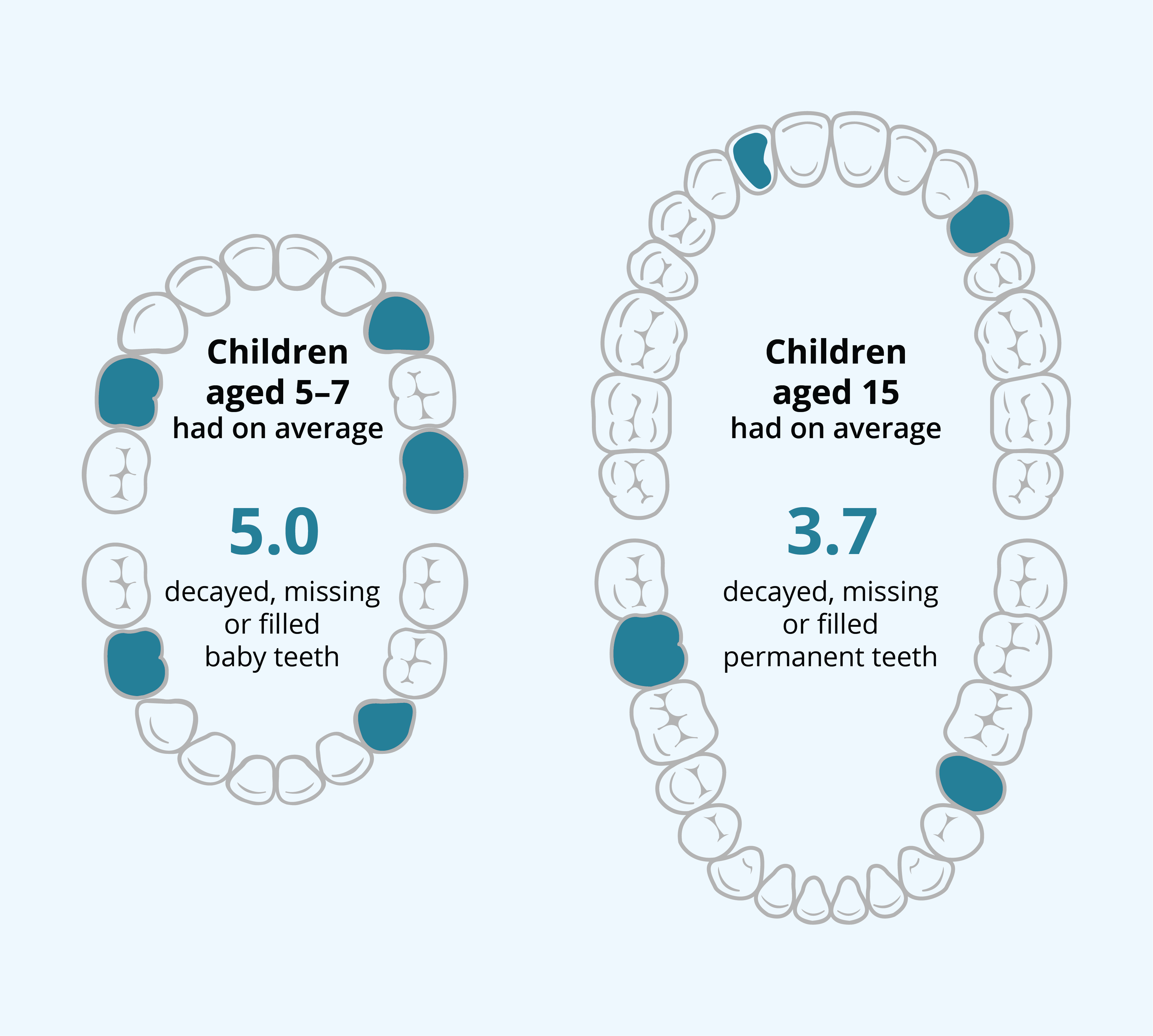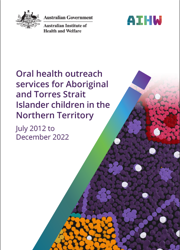Summary
Oral health is an important part of overall health and quality of life. Poor oral health can affect adults and children alike, causing pain, embarrassment, even social marginalisation. For children, the effects can be long-term, and carry through to adulthood.
Aboriginal and Torres Strait Islander (First Nations) children are more likely than non-Indigenous children to experience tooth decay. Several factors contribute to the poorer oral health of First Nations children, including social disadvantage and lack of access to appropriate diet and dental services.
Since 2007, the Australian Government has helped fund oral health services for First Nations children aged under 16 in the Northern Territory. The Northern Territory Remote Aboriginal Investment Oral Health Program (NTRAI OHP) complements the Northern Territory Government Child Oral Health Program by providing preventive (application of full-mouth fluoride varnish and fissure sealants) and clinical (tooth extractions, diagnostics, restorations and examinations) services.
This report presents data from the NTRAI OHP from July 2012 to December 2022.
How many First Nations children received services in the NTRAI OHP?
In 2022, full-mouth fluoride varnish services, fissure sealant applications and clinical service visits were provided to First Nations children in the Northern Territory under the NTRAI OHP. Of those children:
- 5,338 received 6,603 full-mouth fluoride varnish services, an increase of 181 services from 2021
- 1,236 received fissure sealant applications to 5,498 teeth during 1,346 services, an increase of 237 teeth from 2021
- 4,774 received clinical services during 7,505 visits–such as dental assessments, fillings, extractions, or preventive services–a number of visits twice as much as in 2021. This excludes 1,073 visits where only full-mouth fluoride varnish and/or fissure sealant services were provided.

Source: Table S3.1
How many First Nations children experienced tooth decay in the NTRAI OHP?
Tooth decay varied by age, and in 2022, children aged 11 experienced the highest rate of tooth decay (218 children or 86%). In comparison, children aged 1–3 experienced the lowest rates of tooth decay (131 children or 38%).
Proportion of children in the NTRAI OHP who were caries free varied by age in 2022.

Source: Table S3.1
How many decayed, missing or filled teeth did First Nations children have?
In addition to tooth decay, a widely used indicator to measure oral health status is a count of the number of decayed, missing or filled teeth.
On average, in 2022, children in the NTRAI OHP aged 5–7 had the highest average number of decayed, missing or filled baby teeth (dmft), at 5 teeth, while children aged 15 had the highest average number of decayed, missing or filled permanent teeth (DMFT), at 3.7 teeth.

Source: Table S3.1
What was the impact of COVID-19?
Between 2019 and 2020 the number of full-mouth fluoride varnish services, fissure sealant applications and clinical service visits decreased. This was largely due to a fall in attendances between March and April 2020, coinciding with the introduction of restrictions imposed to control the spread of COVID-19. As restrictions were lifted the services started to increase again in 2021. However, service delivery continued to be affected in 2021 and 2022 due to factors such as staffing constraints, isolation requirements and travel requirements for remote communities.
Is the program meeting its benchmarks?
Outcomes for the NTRAI OHP are monitored through performance indicators and benchmarks. The service delivery targets for all three service types were met or exceeded (Table S1).
| Service delivery targets | Outcomes |
|---|---|
At least 3,600 clinical service visits in 2022 | 7,505 clinical service visitsa,b |
At least 5,750 fluoride varnish applications in 2022 | 6,603 fluoride varnish applications provided |
Fissure sealant applications to at least 1,500 teeth in 2022 | Fissure sealant applications to 5,498 teeth |
Health outcome targets | |
At least 50% of total service items are preventive services | 63% of total service items were preventive in 2022 |
- For the 1 January 2022 – 31 December 2022 reporting period two additional payor codes. These codes were new for this reporting period.
- For the 1 January 2022 – 31 December 2022 reporting period, visits where only full-mouth fluoride varnish and/or fissure sealant services were provided were not included in reporting. These services were included in the 2020 and 2021 reporting periods.



